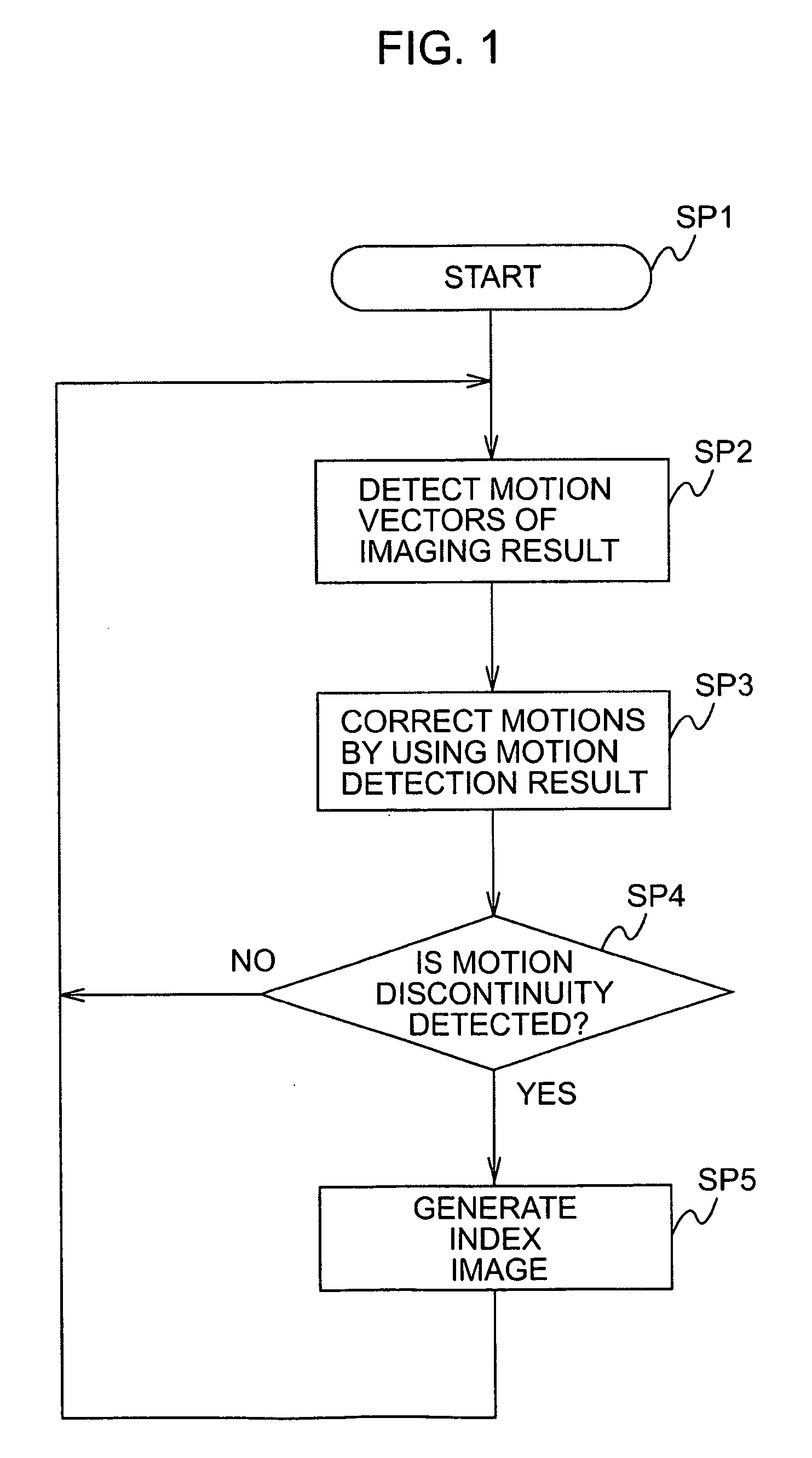Imaging apparatus and method for processing imaging results
a technology of imaging apparatus and image, applied in the field of imaging apparatus, can solve the problems of difficult detection of subjects if the background is moving, and achieve the effect of detection easily and reliably
- Summary
- Abstract
- Description
- Claims
- Application Information
AI Technical Summary
Benefits of technology
Problems solved by technology
Method used
Image
Examples
first embodiment
[0025]FIG. 2 is a block diagram illustrating an imaging apparatus 1 according to a first embodiment of the present invention. The imaging apparatus 1, which is a digital video camera, records imaging results of moving pictures and still images on a recording medium or plays back the imaging results recorded on the recording medium in response to an operation from a user.
[0026] In the imaging apparatus 1, a lens 2 condenses light to form an optical image on the imaging plane of an imaging device 4 by varying the magnifying power or the focus under the control of a camera control microcomputer 3.
[0027] The imaging device 4 includes a charge-coupled device (CCD) solid-state imaging element, a complementary metal oxide semiconductor (CMOS) solid-state imaging element, etc., and photoelectrically converts optical images formed on the imaging plane to output imaging results of moving pictures or still images. In the first embodiment, the lens 2 forms an optical system for forming optica...
second embodiment
[0082] In a second embodiment, the generation of index images in the imaging apparatus 1 is performed when imaging results are recorded. Additionally, in response to an instruction from the user, an electronic zoom operation is performed while moving-picture imaging results are being recorded. The imaging apparatus 1 of the second embodiment is the same as that of the first embodiment, except that the index-image generating processing and the electronic zoom processing are performed on imaging results output from the A / D converter 5 and motion information output from the camera control microcomputer 3 instead of imaging results and motion information played back from the moving-picture recording medium 21.
[0083] According to the second embodiment, advantages similar to those obtained by the first embodiment can be achieved.
third embodiment
[0084] In a third embodiment, the optical system is controlled by using the relative motions of the individual parts of an imaging result with respect to a background, which are detected in the first or second embodiment. The imaging apparatus 1 in the third embodiment is the same as that of the first embodiment, except that the elements related to the controlling of the optical system are different from those in the first embodiment, and thus, an explanation is given by using the imaging apparatus 1 shown in FIG. 2.
[0085] In the third embodiment, in response to an instruction to photograph moving pictures from the user, the central processing microcomputer 7 starts processing indicated by the flowchart in FIG. 11. The central processing microcomputer 7 proceeds from step SP31 to SP32. In step SP32, the central processing microcomputer 7 detects an area containing a subject which is being photographed, as in the first embodiment, by using imaging results output from the A / D convert...
PUM
 Login to View More
Login to View More Abstract
Description
Claims
Application Information
 Login to View More
Login to View More - R&D
- Intellectual Property
- Life Sciences
- Materials
- Tech Scout
- Unparalleled Data Quality
- Higher Quality Content
- 60% Fewer Hallucinations
Browse by: Latest US Patents, China's latest patents, Technical Efficacy Thesaurus, Application Domain, Technology Topic, Popular Technical Reports.
© 2025 PatSnap. All rights reserved.Legal|Privacy policy|Modern Slavery Act Transparency Statement|Sitemap|About US| Contact US: help@patsnap.com



